The Japanese quail is the most common species of quail found mainly in East Asia. It was considered as a subspecies of the common quail, but it was distinguished as it’s own species in 1983. Since the 12th century, the Japanese quail has played an active role in the lives of humanity.
And it is still playing very important and major roles in industry and scientific research. These birds are abundant across most of their range, where they are found. And currently there are a few true breeding mutations of this quail species.
The Japanese quails are actually the domesticated forms of the common quails. The earliest records of domesticated populations of this breed are from Japan during the 12th century.
Although, there is evidence that the species was actually domesticated as early as the 11th century. Previously these birds were bred as songbirds, and it is thought that they were regularly used in song contest.
Japanese breeders began to selectively breed these birds in the early 1900s for increasing egg production. And the industry surrounding quail eggs was flourishing by 1940.
The events of Second World War led to complete loss of quail lines bred for their song type, as well as almost all of those bred for egg production. The few quails left after the war, were used to rebuild the industry.
And all the commercial and laboratory lines available today are considered to have developed from this population of quails. Populations of the Japanese quails are known to inhabit mainly Russia and East Asia (including China, India, Japan and Korea).
They are also available and found in some other Asian countries such as Cambodia, Laos and Vietnam. They are also found in some African countries such as Kenya, Madagascar, Namibia, Malawi and Tanzania.
Currently there are a few true breeding mutations of these birds. The breeds from the United States are: English White, Italian, Golden range, Golden Tuxedo, Manchurian, Tibetan, Texas A&M, Red Range, Rosetta, Roux Dilute and Scarlett. However, read some more information about this quail breed below.
Japanese Quail Characteristics
The Japanese quail is a beautiful bird. The morphology of this bird differs depending on it’s stage in life. Both male and female chicks exhibit the same kind of plumage and coloring.
Their heads are tawny in color, with small back patches littering the area above the beak. They have a pale yellow-brown stripe surrounded by smaller black stripes runs down the top of the head.
The wings and the back of the chick are a pale brown in color. The back have four brown stripes running along their length. Plumage of the adult Japanese quail is different depending on the gender, allowing for differing male and females from one another.
Predominantly brown plumage are available in both males and females. But the markings on the throat and breast, as well as the particular shade of brown of the plumage can vary quite a bit.
The breast feathers of the male show off a uniform dark reddish-brown color that is devoid of any dark spots. While the female’s breast feathers are littered with dark spots among generally pale feathers.

The cheek feathers of the female are more cream colored, but the male’s cheek feathers are reddish-brown. Sometimes, some males also exhibit the formation of a white collar, but this doesn’t occur in any female Japanese quail.
In case of size, the male Japanese quail tend to be smaller in size than the females. The domesticated birds generally weight between 100 and 120 grams (the wild birds generally weight less than the commercial variety, and they weight between 90 and 100 grams).
Although, weight of the domesticated lines can vary, and the commercial strains which are used for meat production can reach up to 300 grams.[1]
Uses
They Japanese quail is a dual-purpose breed of domestic quail. It is raised for both eggs and meat production.
Special Notes
The Japanese quail is mainly a ground-living species that tends to stay within the areas of dense vegetation in order to take cover and evade predation. Natural habitats of these birds include bushes along the banks of rivers, grassy fields, and agricultural fields that have been planted with crops such as rice, barley and oats.
It has also been reported to prefer open habitats such as meadows, mountain slopes near a water source and steppes. Diet of the Japanese quail includes many different types of grass seeds. They also feed upon a variety of insects, larvae and other small invertebrates.
They generally eat and drink at the beginning and end of the day. But they can also eat and drink throughout the day in commercial farm conditions.
In case of breeding, the Japanese quail shows peak breeding activity during the summer season (when Tested increase in size and testosterone hormone concentrations hit their peak).
These birds are excellent egg layers. They tend to lay eggs in the few hours preceding dusk. Their eggs are generally mottled with a background color ranging from white to blue to pale brown.
The eggs can weight from 8 to 13 grams depending on the strain, and the older females tend to lay much larger sized eggs. Domesticated lines of the Japanese quail can lay up to 300 eggs a year at a very efficient feed to egg conversion ratio.
Today, the Japanese quails are raised as a dual-purpose birds. And they are raised for both meat and eggs production. They are easily managed birds and grow relatively faster.
Today they are raised largely in commercial farms throughout the world. Their meat and eggs are considered very good for consumption compared to chickens and ducks. However, review full breed profile of the Japanese quail in the following chart.
| Breed Name | Japanese |
| Other Names | None |
| Breed Purpose | Dual-purpose (meat and eggs) |
| Special Notes | Very strong and hardy birds, active, generally a ground-living species, natural habitats of these birds are river of banks, grassy fields and agricultural fields, grow relatively faster, generally eat and drink at beginning and end of the day, although the birds in commercial farms can eat throughout the day, summer is the peak breeding season for these birds, these birds are excellent egg layers, today raised for both meat and eggs production |
| Species | Old World Quail |
| Weight | Generally 100 and 120 grams, but the commercial lines can weight up to 300 grams |
| Climate Tolerance | Almost all climates |
| Egg Color | Generally mottled with a background color ranging from white to blue to pale brown |
| Egg Size/Weight | 8 to 13 grams |
| Egg Productivity | Up to 300 eggs a year depending on the domesticated lines |
| Color | Brown with markings |
| Rarity | Common |
| Country/Place of Origin | East Asia |

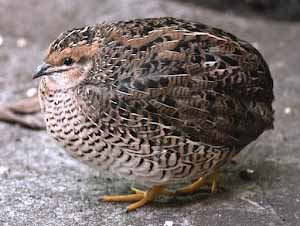
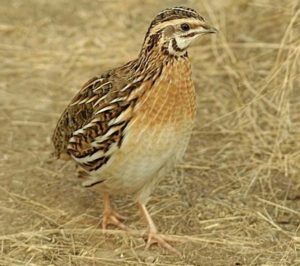
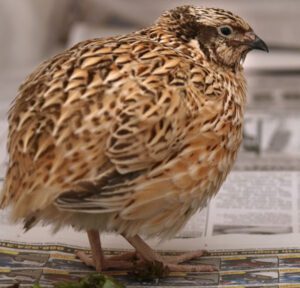

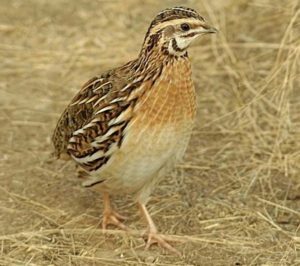
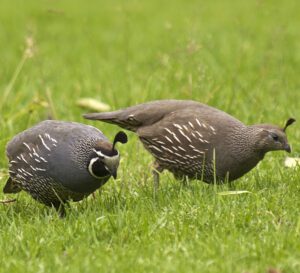
hi I started with 30 japanese quails. now i have only 24 birds. they are very healthy but lay only 4-5 eggs daily. is there any method of increasing egg production??/
There are numerous factors which affect eggs production. Ensure there is enough dark areas inside your bird’s housing system. And also determine the gender of your birds to know the exact number of male and female birds. Provide your birds with enough good quality and nutritious food. Good luck!